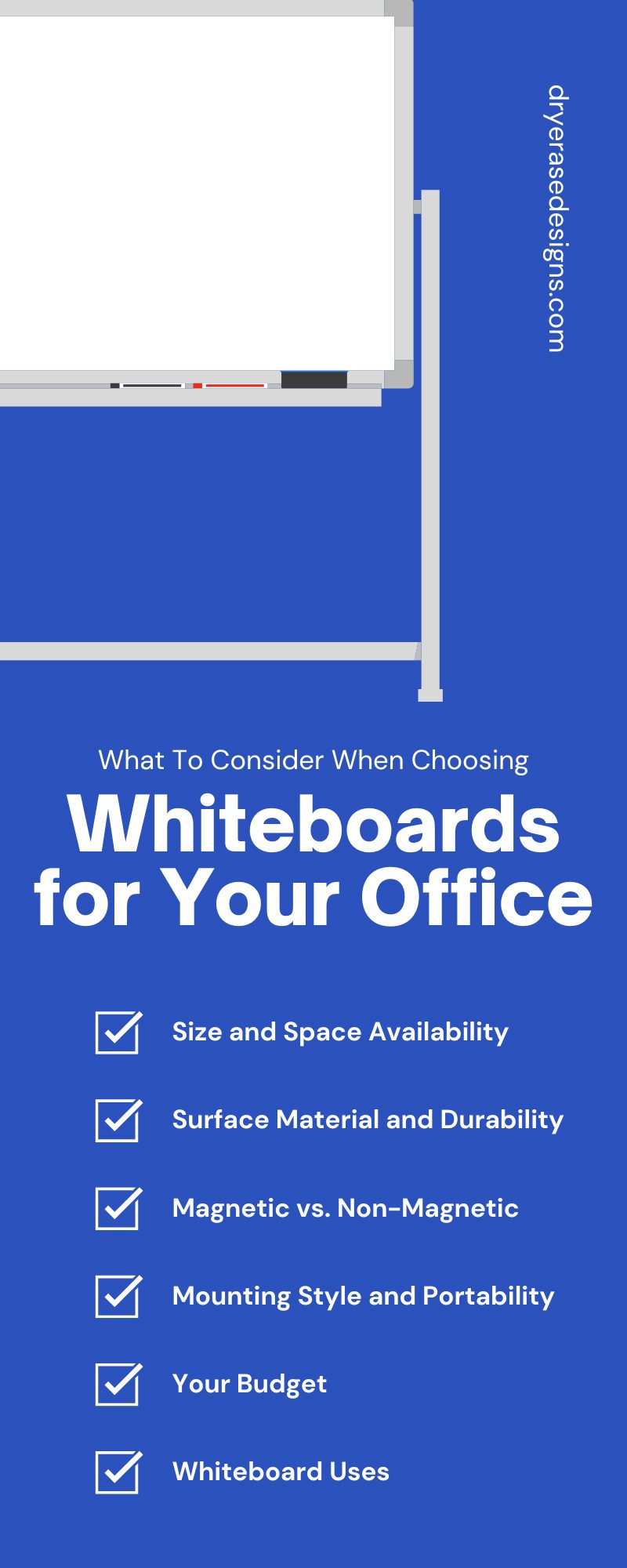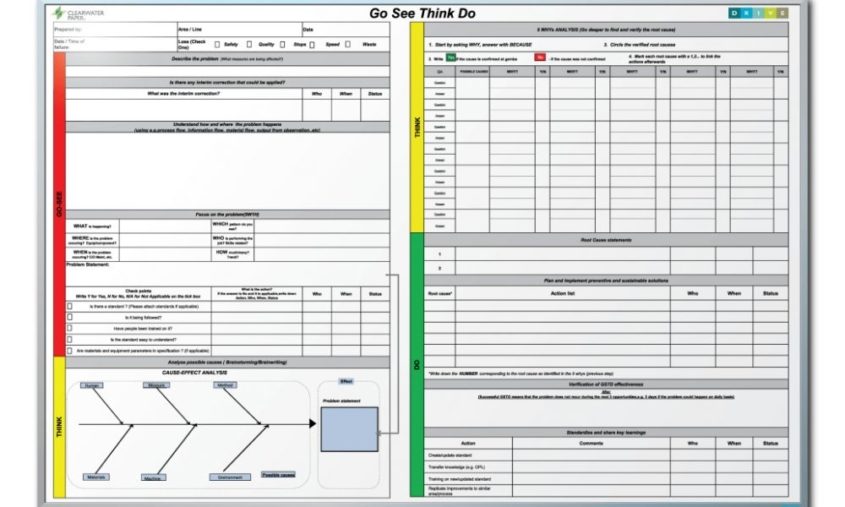What To Consider When Choosing Whiteboards for Your Office
Are you tired of looking at your office’s blank walls? Whiteboards are a timeless office staple and the perfect canvas for creative brainstorming and strategic planning. However, choosing one isn’t as straightforward as grabbing the first board you see. If you’re looking to revamp and invigorate your office, understanding what to consider when choosing whiteboards can help bring your dream workspace to life.
Size and Space Availability
When searching for the ideal whiteboards for your office, the first factors to consider are the sizes of your work rooms and the spaces available to accommodate whiteboards. Measuring the dimensions of the intended walls or areas where the whiteboards will reside is essential. This ensures that the boards fit properly and allows for comfortable viewing and interaction by all participants.
A whiteboard that is too large for a space can overwhelm the room, while one that is too small may not be functional for group activities. Balance is key in optimizing both the usability and aesthetic appeal of your office space.
Surface Material and Durability
Selecting the right surface material for your whiteboards is crucial for their performance and longevity. Here are the most common material options:
Porcelain Whiteboards
Porcelain whiteboards offer a durable solution but will cost more upfront. Made with porcelain enamel fused onto a steel surface, they resist staining, scratching, and ghosting. This makes them suitable for moderate to heavy use in classrooms and conference rooms.
Coated Dry-Erase Steel
Coated dry-erase steel boards consist of a steel sheet covered with a special dry-erase coating. This coating provides a smooth writing surface that is resistant to staining and ghosting. The steel’s magnetic properties make the board even more versatile.
Glass Whiteboards
Glass whiteboards represent the pinnacle of durability and sleek design. They resist stains and ghosting entirely, can last indefinitely with proper care, and provide a modern aesthetic to any office space. Glass whiteboards can also be magnetic and printed on, depending on your needs. The main considerations for glass whiteboards are their higher price point and heavier weight, requiring secure mounting.
When considering durability, think about the amount of daily usage each whiteboard will undergo and the conditions of their environments. A board in a high-traffic area with frequent use will be more beneficial if it is made with a durable surface like porcelain or glass. It’s an investment in long-term functionality and aesthetic preservation of your office space.
Magnetic vs. Non-Magnetic
Another important consideration in finding the perfect whiteboards for your office is deciding between magnetic and non-magnetic options. Magnetic whiteboards offer enhanced functionality, allowing you to use magnets to attach notes, printed materials, or even small tools directly onto the boards. This makes them ideal for dynamic presentations or collaborative sessions.
On the other hand, non-magnetic whiteboards typically come at a lower cost and can suit environments where such interactive features are not necessary. Weighing the need for this versatility can help you make an informed decision that best fits your office requirements.
Mounting Style and Portability
The next step when choosing your ideal office whiteboards is understanding the different mounting styles and whether you need a whiteboard to be portable.
Fixed Wall Mount
This is the most common installation method for whiteboards, offering stability and permanence. Fixed wall-mounted boards are ideal for rooms dedicated to meetings, brainstorming sessions, or spaces where the whiteboard will be a central fixture. Installation requires ensuring the wall can support the whiteboard’s weight, especially for larger sizes.
Mobile Stand
For offices that require flexibility, whiteboards on mobile stands are invaluable. These allow you to move the whiteboards from room to room, adapting to the dynamic needs of various meetings, collaborative projects, or spaces where presentations are given. Mobile stands often come with locking wheels to secure the boards in place during use.
When deciding on the right whiteboards for your office, consider the boards’ physical characteristics and how they will fit into your daily operations. The chosen mounting style plays a crucial role in this, impacting everything from the boards’ usability to how they influence the functionality and flexibility of your workspaces.
Your Budget
After considering the size, surface material, and mounting options, your budget is an essential factor to keep in mind. Whiteboards vary significantly in price based on their features, materials, and sizes. High-quality materials like porcelain, glass, and coated dry-erase steel may offer better longevity and an enhanced writing experience, but they do come with a higher price tag.
Alternatively, melamine or non-magnetic options can be more budget-friendly but might not meet the same standards of durability or functionality. It’s important to balance your office needs with the financial investment you’re prepared to make. Consider not only the initial purchase price but also the potential savings in terms of longevity and usability when planning your budget.
Whiteboard Uses
Finally, and perhaps most critically, reflect on how you intend to use the whiteboards in your daily operations. The nature of your activities influences not only the size and material of each whiteboard but also its functionality.
For example, departments with heavy project management needs might benefit from custom whiteboards that include pre-printed designs, grids, calendars, or nearly anything they desire. Alternatively, creative teams might prefer large, blank canvases that allow for unrestricted expression of ideas.
Understanding the specific requirements of your team and the activities the whiteboards will support is essential in selecting the right options. This insight ensures that the whiteboards serve their intended purpose effectively.
What to consider when choosing whiteboards for your office includes a comprehensive understanding of your workspace’s physical dimensions, the daily activities it supports, your requirements for a printed whiteboard, and the balance between budgetary constraints and the need for durability and functionality. Whether you opt for the sleek modernity of a glass board, the rugged durability of porcelain, or the cost-effective practicality of melamine, each choice should be influenced by your office’s specific requirements.
Remember, the right whiteboards can significantly enhance the dynamics and productivity of your workspace, making them a critical investment in your team’s collaborative potential. Choose wisely, and watch your office transform into a hub of innovation and strategic genius.





